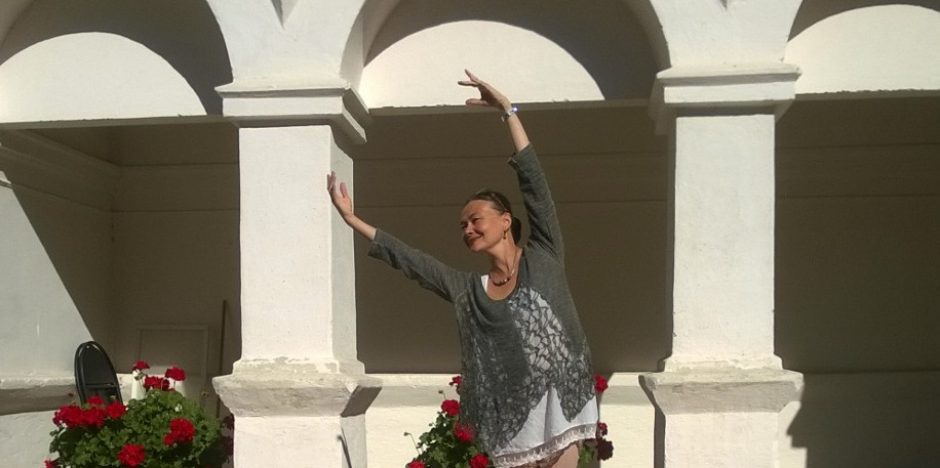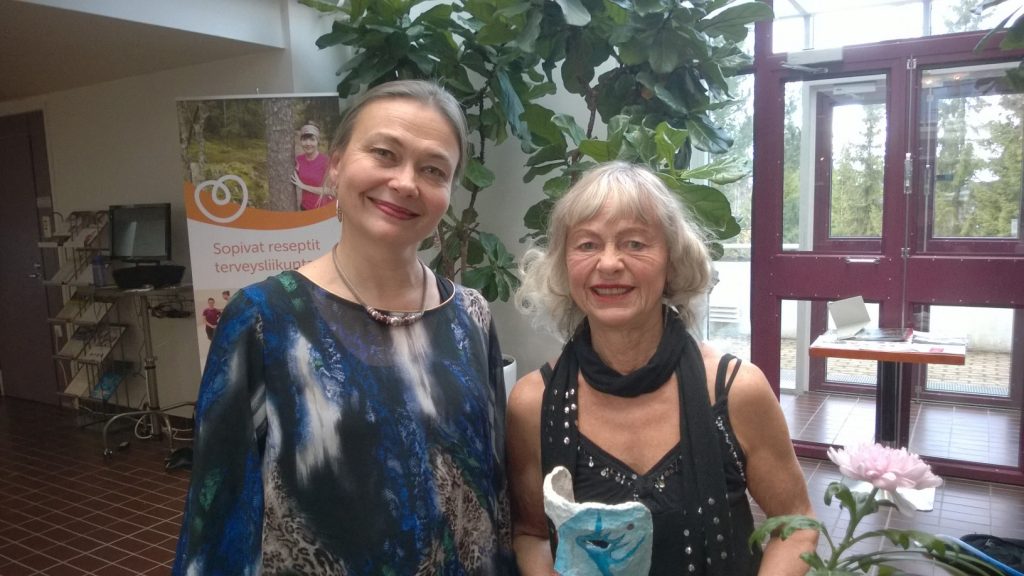I am home. Home in my body. Listening into myself and simultaneously being aware of the people surrounding me, all of us taking part in the International Home in the Body seminar, Kotona kehossa at UKK Instituutti, Tampere. What has brought us together to this two-day seminar during the last weekend of October is a mutual interest in embodiment and inter-corporeality. The structure of this seminar is 4 hours of movement and 2,5 hours of talk/day. This is as it should be. Unfortunately, most of the time the typical conference structure tend to be 7 hours of talk and 15 minutes of pause gymnastics. Or worse, 8 hours of talk and 0 minutes of movement. However, the body deserves to be taken seriously. It deserves to be given space. As dance therapist and psychologist Päivi Pylvänäinen pointed out in her lecture in reference to the trendy phenomenon of Mindfulness, “there’s no mind without body”. Yet, the body also seems to scare and you can easily dismiss it. Until one day you find out the hard way about its existence. Or, alternatively, you can choose a wiser path and dance out into space as you used to do in your childhood.
I first met the organizers, Riitta Saarikko and Pirjo Salo, at an unforgettable Essential Motion course in Helsinki in summer 2013. The third member of the organizing committee being Regina Skogberg, also an Essential Motion practitioner. When I first got to know that they would arrange an international seminar with Rosen therapist and Essential Motion founder Karen Roeper as keynote, I rushed to sign up. This was something that couldn’t be missed. So, after a hectic autumn I find myself jumping into the train to Tampere. My hip is aching and my chest is rigid as stone – so it’s aboout time to get moving. Karen speaks for 5 minutes and then continues with a 2,5h Essential Motion workshop, inspiring us all to “unleash the power of investigation” when exploring movement. There’s nothing right or wrong – just the joy of darting out in space together with other moving beings. Karen asks us to choose a quality that we will carry with us throughout the session. My quality is “softness”. And in pair exercises I find myself approaching an older woman who seems wise and warm. Afterwards it turns out that she really is a grand-mother to a two-year old and I spontaneously shout out that I’m in need of a grand-mother as well. At the end of the workshop my conclusion is that after only 2,5 hours together, I trust and know these people in the room better than many of my colleagues after 17 years in the same workplace. Such is the power of moving together.
I could share so many insights, one interesting aspect being Jaana Laukkarinen’s lecture on the topic of the managers body, a machine or a friend: “Johtajan keho, kone vai kumppani” with frightening examples of the body failing as a result of not being able to read the signals from the body on time. Jaana herself being a great authority on the topic as she used to hold managerial positions in the industry, also internationally. A particularly memorable workshop was Päivi Pylvänäinen’s dance therapy session where I found an exquisitely beautiful hand and started a mirror improvisation with the owner of that hand, a lovely petit lady, again older than myself. We also ended up being paired for hide-and-seek – so fun, so light, so joyful. Drew Leder claims in The Absent Body, that many people do not even recognize their own hand from just a small sample of photos of hands. Incredible! I never even found out the name or profession of that lady with the beautiful hand movements, yet, that moment of dancing together meant a lot to me.
There is so much more to write about, Ulla Kleberg’s Qimotion session that was filled with kindness, or the art therapy workshop where we worked with our own names and memories. Not to forget the breaks when there were many meaningful encounters with encouraging people, everybody immediately understanding the point of Business Ballet and Dancing English Teachers. “Yes, you are in your own tribe here”, said they. I realized that I’ve been for many years defensive about using arts-based methods in a business university. I don’t need to be. It’s wasted energy to explain about Business Ballet to somebody who is absent from the body, somebody without the capacity of understanding the importance of embodiment. So maybe I should drop the explanations and just be what I am and let my work speak for itself like rings on water. I love working with the students though, and I’m grateful for my Business Ballet group in Porvoo, and my Sales Presentation students in Pasila. I feel that now I finally have the tools to share what has taken me 41 years to learn about the body, ever since I entered ballet school in 1975. The people at the seminar also rejoiced with me when I told about the exchange student who recently told me in class that she had chosen Finland and Haaga-Helia since we offer my Business Ballet course. So all my efforts and challenges have not been in vain. At the beginning I mentioned the quality Karen Roeper asked us to cherish: for me it was “softness”. I am tired of fighting, I need kind fairy-tale grand-mothers to cradle me. I don’t want to move about like a hedgehog any longer.
I wish to end this post with a eloge to Swedish painter and dancer Monica Gorschelnik, born in 1946 in Finland. Even before I knew that she was an artist, I was enthralled by her radiant aura. And then she surprised us all with a dance performance when we thought the seminar already to be over. Such a rare moment of wordless beauty beyond time and space. Touching the atoms in our bodies. Finally, I am home.

